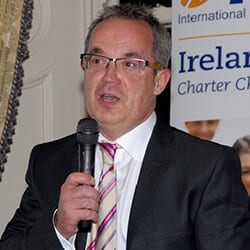Stuck in the Reactivity Trap
“The world is becoming more turbulent faster than most organizations are becoming more resilient.” –Gary Hamel
Today, our times are marked by how we navigate unprecedented complexity. This new volatile, uncertain, complex and ambiguous (VUCA) context, with its pace of change and spaghetti bowl of problems, requires new leadership capacity to prevent stagnation and manage attention effectively.
In my coaching practice, I witness some of my corporate clients staggering—they can’t keep up with the pace of change and the demands of them often seem overwhelming. From my perspective, their main performance gap is that their organizational rate of learning is not greater than the rate of VUCA change.
Too many executives have fallen prey to urgency and addiction. Hyperactivity and confusion ensue from this state. Every day, it feels like you have to lay down tracks in front of a moving train. This usually leads to addiction of “speed of execution,” where growth is highly important and perceived fears of not “being good enough” and imposter syndrome are quieted.
“We have reached a stage where we often pursue growth for growth’s sake, a condition that in medical terminology would simply be called cancer.” –Frederic Laloux
In an April 2018 Chartered Institute of Personnel and Development (CIPD) UK survey, one in three workers (30 percent) said their workload is too much and more than a quarter (28 percent) of senior leaders said that they find it difficult to fulfil personal commitments because of their job.
This reactivity trap tends to spark Organizational Attention Deficit Disorder (ADD). With attention-deficit/hyperactivity disorder, the brain gradually loses its capacity to attend fully and thoroughly to most tasks. Executives do whatever they can to handle a load they simply cannot manage as well as they’d like and therefore feel a constant low level of panic and guilt.
I witness this in my own practice with corporate clients postponing sessions and re-booking by synchronizing agendas. More recently, a dear, beloved friend of mine, a 54-year-old director of a major retail store in Paris, had a heart attack.
How well can your clients’ spot patterns, making sense of the complex world around them so they can act better in it?
What is it that our clients are not addressing in order not to be swallowed up in today’s issues?
To answer these questions, perhaps our clients’ greatest tasks will be to face the habits and fears that keep them bound to the things they are trying to change.
It is a time of unlearning—for me, the essence of executive coaching—and for us to support our clients by creating different spaces and shifting from reactive styles to creative competencies in order to navigate uncertainties where research tells us there is a high correlation with leadership effectiveness.
Our role as executive coaches is to guide corporate clients on the hero’s journey by supporting them in the underworld of this uncertain, complex, ambiguous world, so they can face their own inner demons of seeking certain, simple and clear growth strategic roadmaps. This will enable them to shapeshift toward whatever goals they may have. The hero’s journey includes the acknowledgement that the hero requires some sort of support along the way.
In my approach with clients, I coach them to be successful by helping them adapt to these challenging VUCA circumstances and perform at a much higher level by developing a more sophisticated and nuanced understanding of these new conditions. For this to happen, they must increase organizational capacity in four dimensions:
- The Inner Core (Up-levelling the “I” mental construct awareness) – How do I uncover my internal psychological dynamics working from the inside-out?
- The Outer Core (leadership competency framework) – What kind of leadership do I need to step into, to be successful in this new VUCA reality? Which leadership skill enhancements would give me the best value for money in this new context?
- The (We) Culture – What does a collaborative relationship looks like in a VUCA circumstance? How do you redefine each team member’s role in this constant fluctuating environment?
- The (IT) Structure – What processes need bolstering under the additional pressure? How is the strategy translated into clear objectives and how will these be achieved?



thank you